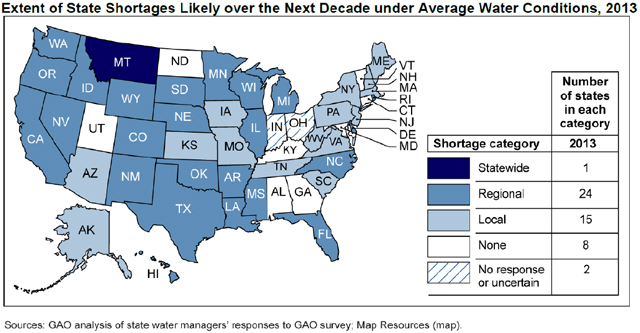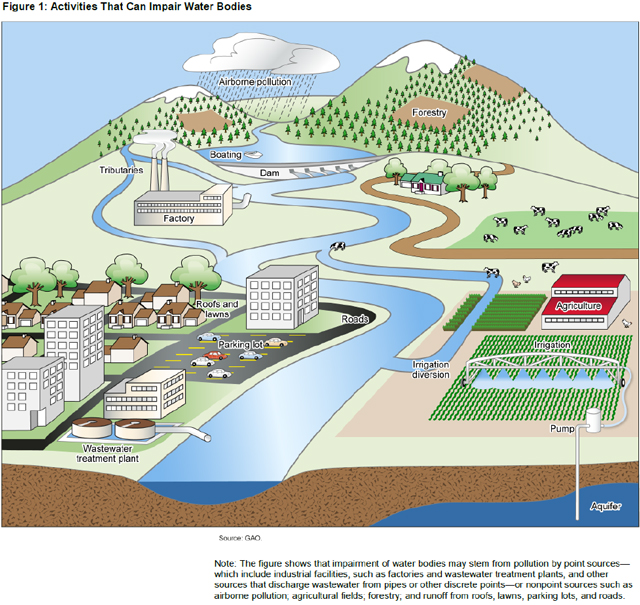Safe and Clean Water
- how population growth could strain water supplies;
- the lack of information on water availability and use; and
- the effects of climate change and extreme weather events, including droughts and floods.
(Excerpted from GAO-14-430)
Pollution and the Clean Water Act Our lakes, rivers, and other bodies of water may be at risk for pollution from a variety of sources. The figure below shows how water bodies may become polluted, including- “point sources,” single, identifiable factors that introduce pollutants to specific areas; and
- “nonpoint sources,” more variable factors that introduce pollutants over larger areas.
(Excerpted from GAO-14-80)
Under the Clean Water Act:- States must establish water quality standards.
- States must develop pollutant budgets, known as “total maximum daily loads” (TMDL)—the maximum amount of each pollutant that a body of water can contain and still comply with water quality standards.
- The Environmental Protection Agency (EPA) and states must issue permits for point sources of pollution and provide incentives to reduce nonpoint source pollution.
- $384 billion (in 2011 dollars) for drinking water systems, and
- $298 billion (in 2008 dollars) for wastewater systems.
- Questions on the content of this post? Contact Anne-Marie Fennell at fennella@gao.gov or Alfredo Gomez at gomezj@gao.gov.
- Comments on GAO’s WatchBlog? Contact blog@gao.gov.

GAO's mission is to provide Congress with fact-based, nonpartisan information that can help improve federal government performance and ensure accountability for the benefit of the American people. GAO launched its WatchBlog in January, 2014, as part of its continuing effort to reach its audiences—Congress and the American people—where they are currently looking for information.
The blog format allows GAO to provide a little more context about its work than it can offer on its other social media platforms. Posts will tie GAO work to current events and the news; show how GAO’s work is affecting agencies or legislation; highlight reports, testimonies, and issue areas where GAO does work; and provide information about GAO itself, among other things.
Please send any feedback on GAO's WatchBlog to blog@gao.gov.


